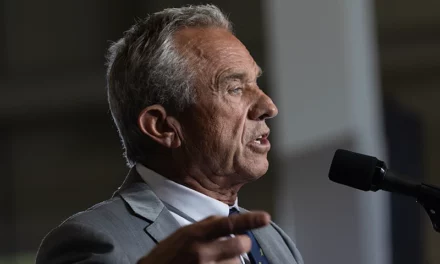We support our Publishers and Content Creators. You can view this story on their website by CLICKING HERE.
October 3, 2024 – 6:48 AM PDT
WASHINGTON (Reuters) – The number of Americans filing new applications for unemployment benefits rose marginally last week, but the devastation unleashed by Hurricane Helene in the U.S. Southeast and strikes at Boeing (BA.N) and ports could distort the labor market in the near-term.
The report from the Labor Department on Thursday showed the labor market gliding at the end of the third quarter, a state of affairs that could allow the Federal Reserve to be in no rush to deliver large interest rate cuts.
“For the moment, the labor market looks steady as a rock and the economy appears to have missed falling headlong over the cliff into the depths of recession,” said Christopher Rupkey, chief economist at FWDBONDS. “Fed officials are unlikely to hurry ahead with aggressive interest rate cuts unless the labor market deteriorates further.”
Initial claims for state unemployment benefits increased by 6,000 last week to a seasonally adjusted 225,000 for the week ended Sept. 28. Economists polled by Reuters had forecast 220,000 claims for the latest week.
Unadjusted claims fell 1,066 to 180,647 last week. The decline, however, was less than the drop of 5,692 that had been anticipated by the model used by the government to strip out seasonal fluctuations from the data.
As a result the seasonally adjusted claims rose. Only Michigan reported filings above 1,000 last week.
Overall claims are at levels consistent with a stable labor market, which is being anchored by low numbers of layoffs.
The calm, however, is likely to be temporarily shattered after Helene wreaked havoc in North Carolina, South Carolina, Georgia, Florida, Tennessee and Virginia late last week. It destroyed homes and infrastructure, and killed at least 162 people across the six states. U.S. Homeland Security Secretary Alejandro Mayorkas this week said the recovery would involve a “multibillion-dollar undertaking” lasting years.
Work stoppages by about 30,000 machinists at Boeing and 45,000 dockworkers at U.S. East Coast and Gulf Coast ports are also expected to muddy the labor market view.
Though striking workers are not eligible for unemployment benefits, their industrial action is likely to ripple through the supply chain and other businesses dependent on Boeing and ports, and cause temporary layoffs.
Boeing has announced temporary furloughs of tens of thousands of employees, including what it said was “a large number of U.S.-based executives, managers and employees.”
The dollar edged up against a basket of currencies. U.S. Treasury yields rose.
UNEMPLOYMENT ROLLS LITTLE CHANGED
The number of people receiving benefits after an initial week of aid, a proxy for hiring, slipped 1,000 to a seasonally adjusted 1.826 million during the week ending Sept. 21, the claims report showed.
The so-called continuing claims have settled down after scaling more than 2-1/2-year highs in July following policy changes in Minnesota that allowed non-teaching staff in the state to file for jobless aid during the summer school holidays.
The slowdown in the labor market is being driven by cooler hiring following 525 basis points worth of rate hikes from the U.S. central bank in 2022 and 2023 to combat inflation.
The Fed last month cut its benchmark interest rate by an unusually large 50 basis points to the 4.75%-5.00% range, the first reduction in borrowing costs since 2020, acknowledging the growing risks to the labor market.
Fed Chair Jerome Powell indicated this week that policymakers would likely stick with quarter-percentage-point rate cuts going forward, in a nod to the economy’s resilience that was confirmed by upward revisions to growth data last week.
Financial markets expect the Fed to cut rates again in November and December.
The claims data have no bearing on September’s employment report as they fall outside the survey week. According to a Reuters survey, nonfarm payrolls likely increased by 140,000 last month after rising by 142,000 in August. Job gains have averaged 202,000 per month over the past year.
Should the Boeing and ports strikes continue beyond next week, they could depress October payrolls on the eve of the Nov. 5 presidential election.
The unemployment rate is forecast to be unchanged at 4.2% in September. It has increased from 3.4% in April 2023 as a surge in immigration boosted labor supply.
Reporting by Lucia Mutikani; Editing by Chizu Nomiyama and Paul Simao

 Conservative
Conservative  Search
Search Trending
Trending Current News
Current News 





